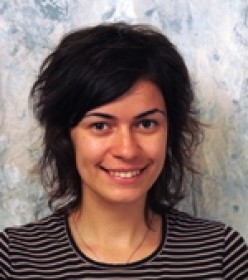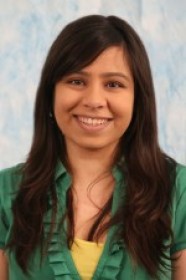Student Talks
Experience Graphs: Leveraging Experience in Planning
Event Location: NSH 3305Abstract: Motion planning is a central problem in robotics and is crucial to finding paths to navigate and manipulate safely and efficiently. Ideally, we want planners which find paths quickly and of good quality. Additionally, planners should generate predictable motions, which are safer when operating in the presence of humans. While the [...]
Supervised Descent Method
Event Location: GHC 2109Abstract: In this thesis, I aim to present a new perspective on looking at classical problems in Computer Vision. Instead of spending efforts on finding novel objective functions and improving existing optimization algorithms, I aim to demonstrate that formulating those problems as policy learning yields more flexible and efficient algorithms. Our recently [...]
Correcting Regions of Inaccurate Modeling for Online Performance Improvement
Event Location: NSH 3002Abstract: To make intelligent decisions, robots often use models of the effects of their actions on the world. Unfortunately, in complex environments, it is often infeasible to create models that are accurate in every plausible situation, which can lead to suboptimal performance. In these cases, online correction of model inaccuracies can lead [...]
Handheld Micromanipulator for Robot-Assisted Microsurgery
Event Location: NSH 3305Abstract: Robot-assisted surgery has been increasingly adopted in a wide variety of surgical applications because it offers fine manipulation with high precision and dexterity. Despite the commercial success of robotic platforms, practical use in microsurgery is still challenging due to a considerable level of accuracy required at sub-millimeter scales. Limited visualization and [...]
Forecasting Human Motion in Social Situations
Event Location: NSH 1507Abstract: The goal of this thesis is to further our understanding of nonverbal communication by developing methods and representations to quantify and predict human body motion during social interactions. We design a data collection protocol and capture system to obtain 3D body pose and facial annotations for groups of interacting people engaged [...]
Modeling Closed-Loop Adaptive Systems
Event Location: NSH 1305Abstract: Brain-machine interfaces (BMIs) are a powerful class of assistive devices that may one day restore movement ability to paralyzed individuals. These devices act by creating a direct mapping between recorded neural activity and the movement of an external actuator, like a computer cursor or a robotic arm, bypassing defective neural transmission [...]
Robust Manipulation via Contact Sensing
Event Location: NSH 3305Abstract: Humans effortlessly manipulate objects in cluttered and uncertain environments. In contrast, most robotic manipulators are limited to carefully engineered environments, e.g. factories, to circumvent the difficulty of manipulation under uncertainty. Contact sensors can provide robots with with the feedback vital to addressing this limitation. However, there are three principal challenges to [...]
Efficiently Sampling from Underlying Physical Models
Event Location: NSH 1305Abstract: Robots today have the capability to collect terabytes of data about their environment and travel kilometers in a single day, yet they are still constrained by one fundamental resource: time. Time limits the number of samples a robot can collect, sites it can analyze, and data it can return for review, [...]
Legible Robot Motion Planning
Event Location: GHC 8102Abstract: The goal of this thesis is to enable robots to produce motion that is suitable for human-robot collaboration and co-existence. Most motion in robotics is purely functional: industrial robots move to package parts, vacuuming robots move to suck dust, and personal robots move to clean up a dirty table. This type of [...]
3D Manipulation of Objects in Photographs
Event Location: NSH 1305Abstract: This thesis describes a system that allows users to to perform full three-dimensional manipulations to objects in photographs. Cameras and photo-editing tools have contributed to the explosion in creative content by democratizing the process of creating visual realizations of users' imaginations. However, shooting photographs using a camera is constrained by real-world [...]









